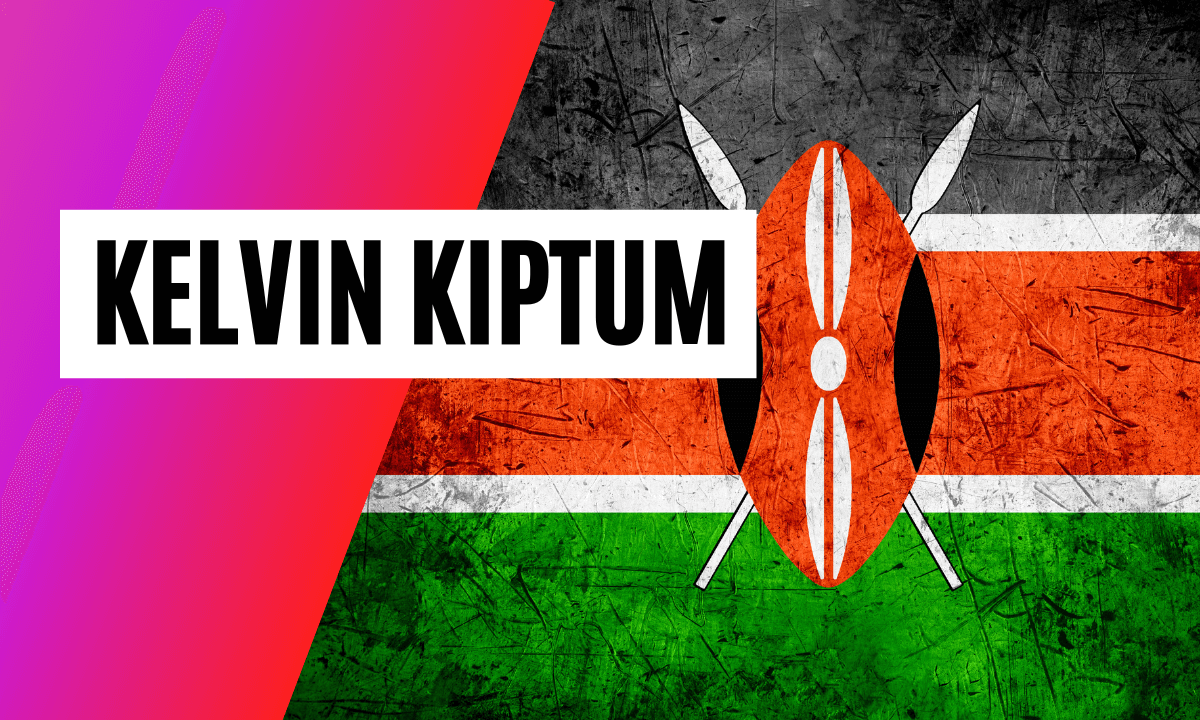Kelvin Kiptum, who sadly passed away far too early, set a new world record at the Chicago Marathon on October 8, 2023.
With a time of 2:00:35 hours, the Kenyan set the first marathon time under 2:01 hours. He took over from compatriot Eliud Kipchoge, who had previously broken the world record twice in a row.
One marathon a day
Kelvin Kiptum's training was no secret, by the way. His training plan focused on high volumes, continuity and no big experiments. His marathon training was also very similar to that of Eliud Kipchoge and Kenenisa Bekele, who were the two fastest marathon runners of all time until Kiptum's high-flying run. But one thing definitely stands out about Kelvin Kiptum's training plan. His volumes were brutal. He sometimes even ran more than 300 kilometers a week. That's an entire marathon distance per day.
Recently, Kelvin Kiptum's training in his immediate marathon preparation was published. In one training week, Kiptum had three core units. This was Kelvin Kiptum's training plan:
Kelvin Kiptum's training
A typical training week for Kelvin Kiptum. In his marathon preparation (12 - 16 weeks), all weeks were structured similarly. He completed two sessions almost every day, with the second session usually being a relaxed endurance run.
Monday:
1st unit: 25 - 28 km between 4:10 - 3:40 min/km (= 50 to 80 seconds per km slower than marathon competition pace).
2nd unit: 12 km at an easy pace without a pace target
Tuesday:
1st unit: interval training on the running track or Fartlek. Example: 3 minutes fast + 1 minute slow + 3 minutes fast + 1 minute slow over a period of one hour.
2nd unit: 12 km easy
Wednesday:
1st unit: 25 - 28 km between 4:10 - 3.40 min/km
2nd unit: 12 km easy without a pace target
Thursday:
1st session: 30 - 40 km close to marathon pace. Average pace approx. 2:58 minutes per kilometer. Only a few seconds slower than his marathon world record (= 2:51 min/km)
Friday:
1st session: 25 - 28 km easy
2nd session: 12 km easy without a pace target
Saturday:
1st unit: interval training on the running track or Fartlek. Example: 3 minutes fast + 1 minute slow + 3 minutes fast + 1 minute slow over a period of one hour.
Sunday:
1st unit: 32 - 40 km "at a good pace"
Important: Long endurance runs should not be run too slowly
The key unit is definitely Thursday with the long endurance run. Incidentally, Kiptum ran this anything but slowly, but only slightly slower than his marathon competition pace. Unfortunately, there are many amateur runners who run their "long runs" far too slowly in preparation for the marathon. Of course, it doesn't make sense to "copy" Kiptum's training, but amateur runners can also gain insights for their marathon training. And Kiptum, like all other world-class runners, did not run the long endurance run comfortably and "as slowly as possible", as is often recommended to amateur runners. Even amateur runners should run their slow endurance run at a pace that is not far off the planned race pace.
Otherwise, Kelvin Kiptum's training week included two tempo sessions on Tuesday and Saturday. The remaining runs were completed in the basic area. There was no rest day for Kelvin Kiptum. Amateur runners should rest at least once a week.
Unfortunately, Kiptum's life came to an untimely end on February 12, 2024: Unbelievable tragedy: marathon world record holder Kiptum is dead
Africans largely train in a similar way
Kelvin Kiptum's training was therefore very similar to that of Eliud Kipchoge, who also has a long endurance run and two tempo runs as his core units. Even the weekly schedule is identical. Kipchoge also completes his long endurance run on Thursdays and the tempo sessions on Tuesdays and Saturdays. The only difference is that Kipchoge's pace is not quite as high: How Eliud Kipchoge trained for the first marathon in under 2 hours!
More about the training of the best runners: Training of the Kenyans: The training of the best runners in the world!



Kommentar schreiben